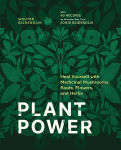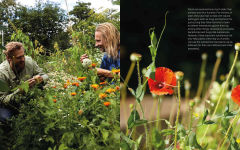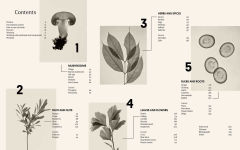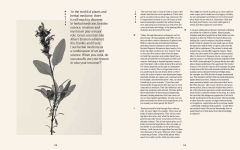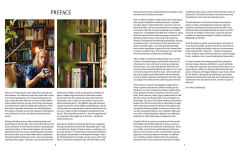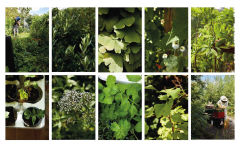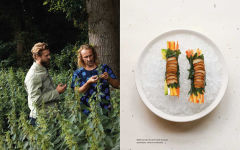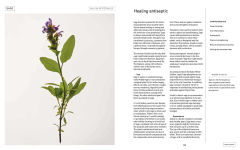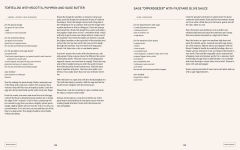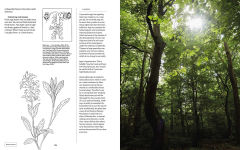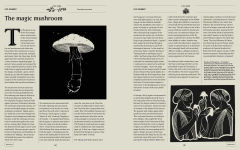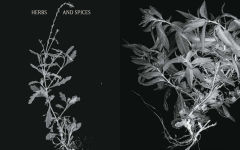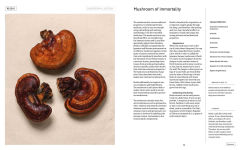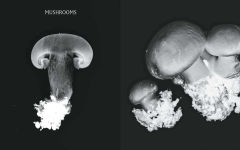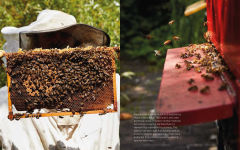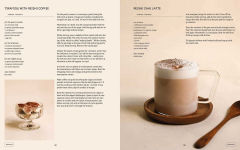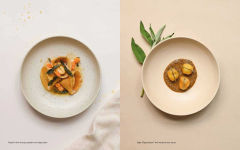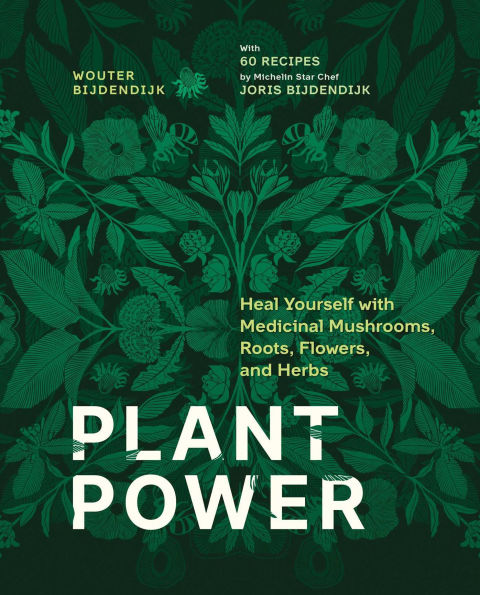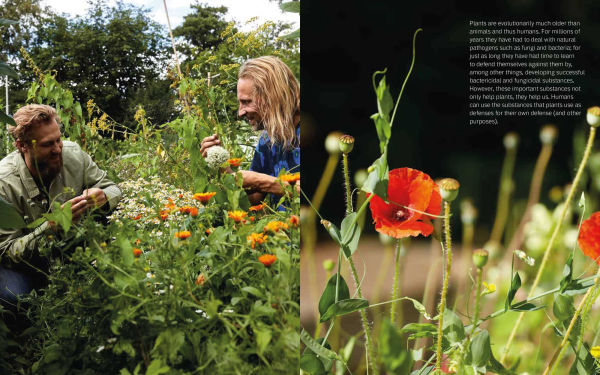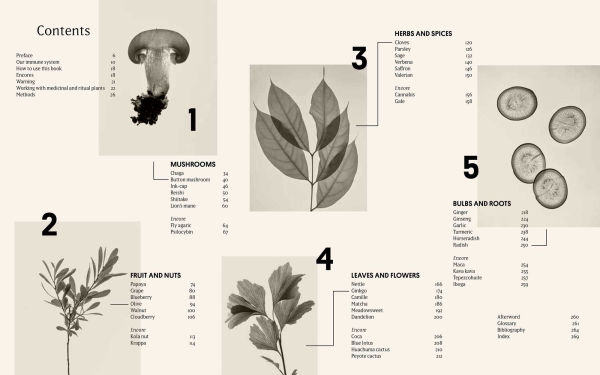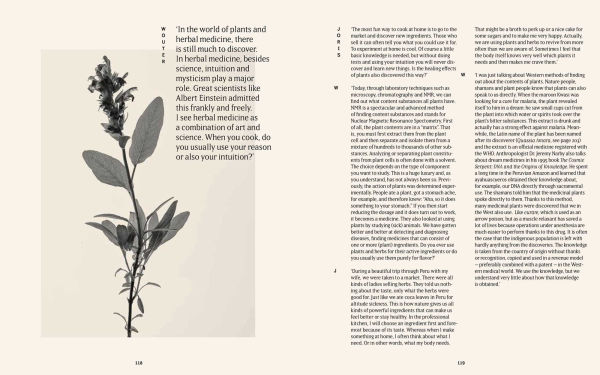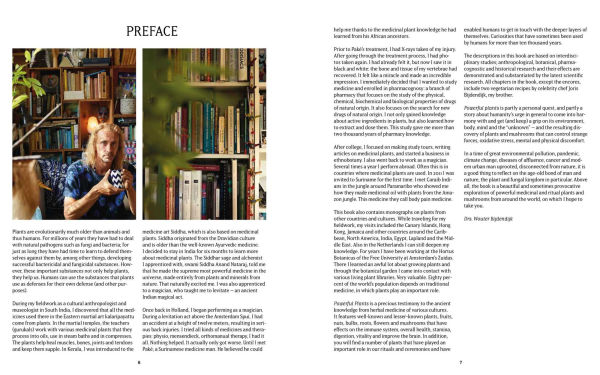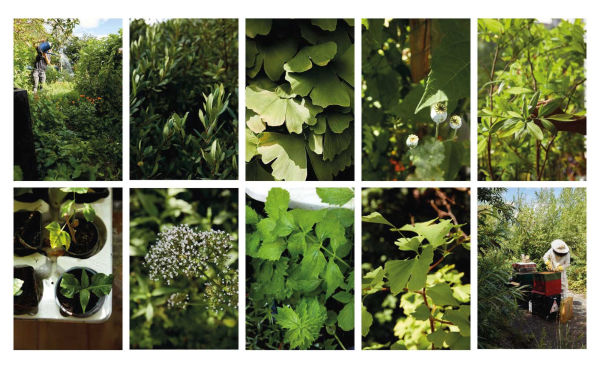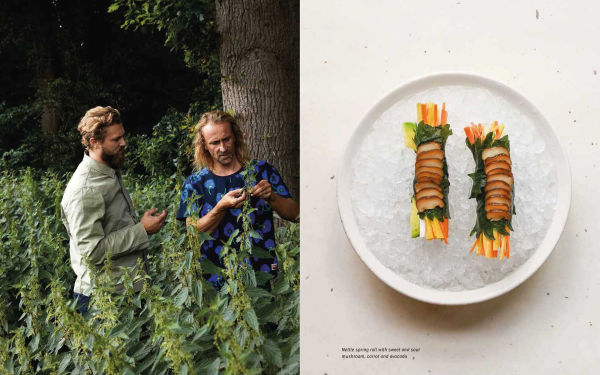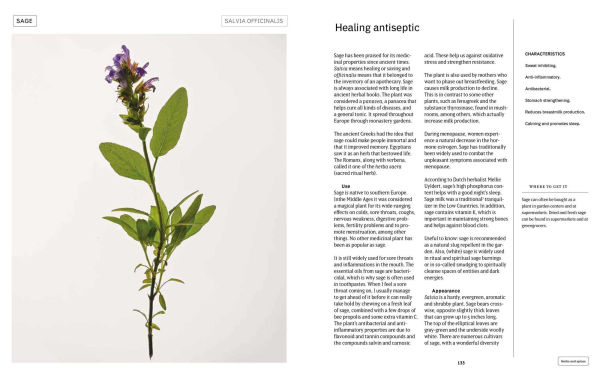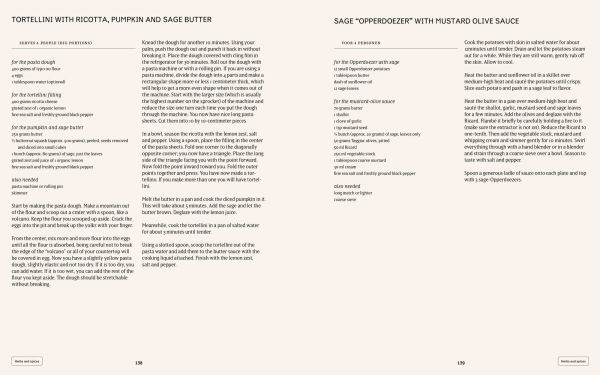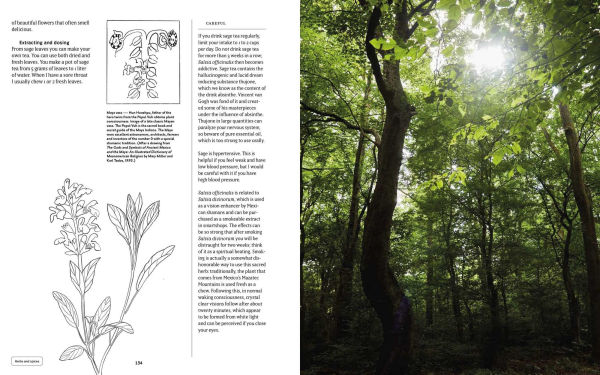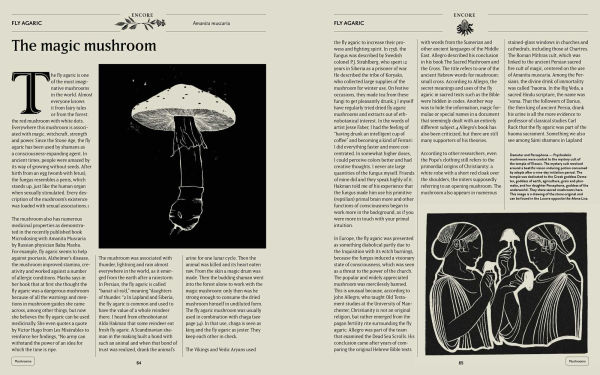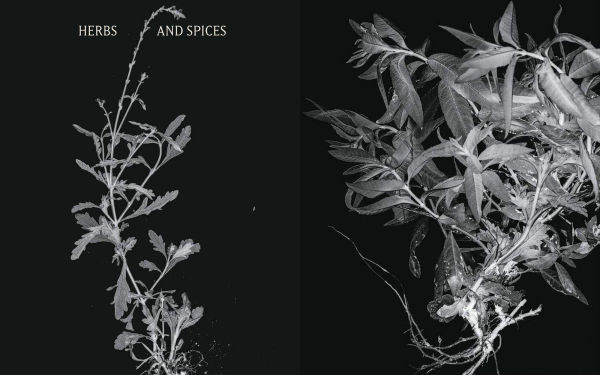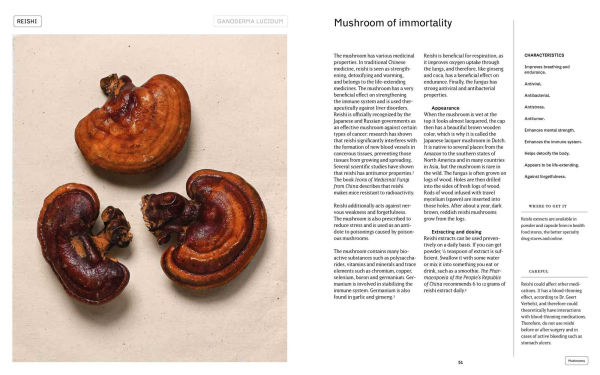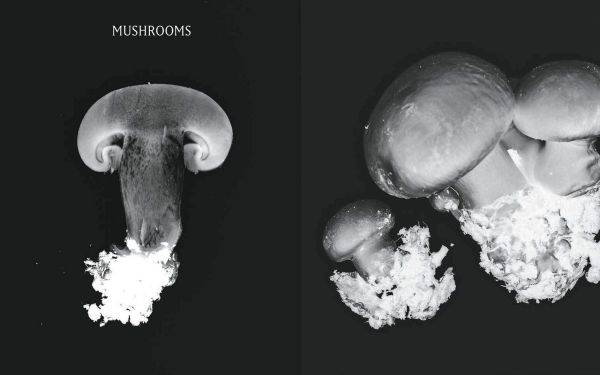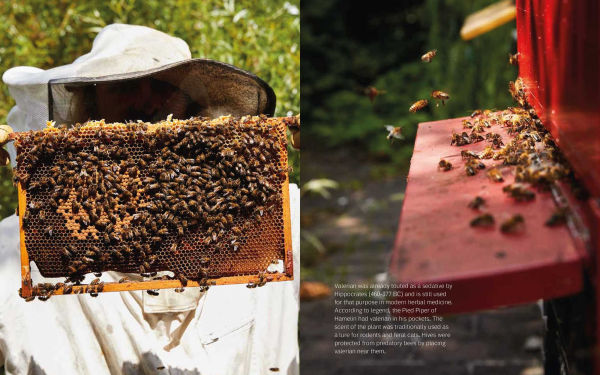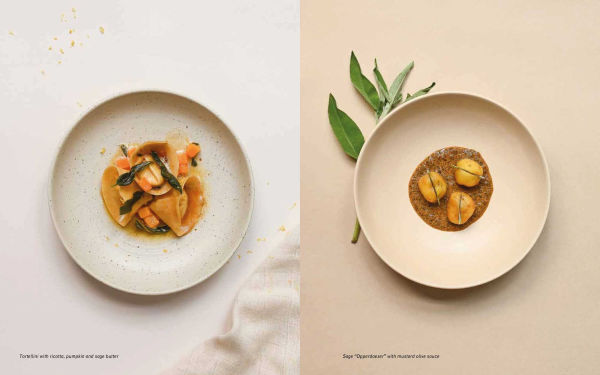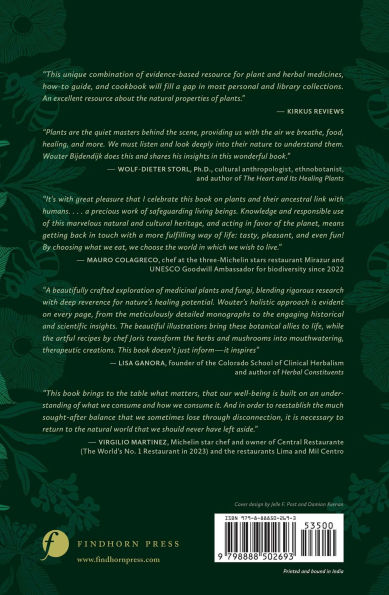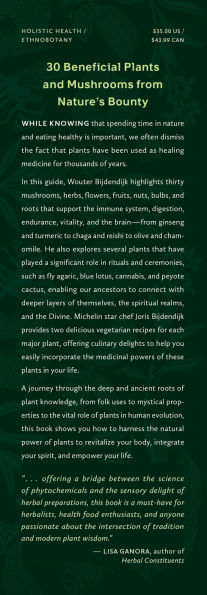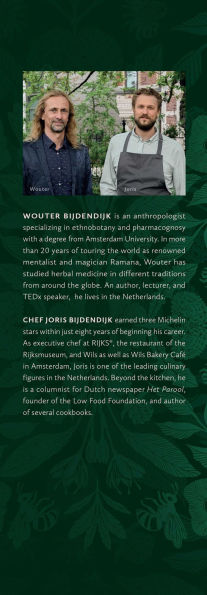Plant Power: Heal Yourself with Medicinal Mushrooms, Roots, Flowers, and Herbs
A full-color reference guide to beneficial plants and mushrooms
“An excellent resource about the natural properties of plants.”—Kirkus Reviews
• Explores the ethnobotany and practical applications of 30 plants, fruits, nuts, bulbs, roots, flowers, and mushrooms that support the immune system, digestion, endurance, vitality, and the brain
• Examines ritual and mind-expanding plants such as fly agaric, blue lotus, cannabis, and peyote cactus
• Offers 60 delicious vegetarian recipes (two for each plant or mushroom) by Michelin star chef Joris Bijdendijk
WHILE KNOWING that spending time in nature and eating healthy is important, we often dismiss the fact that plants have been used as healing medicine for thousands of years.
In this guide, Wouter Bijdendijk highlights thirty mushrooms, herbs, flowers, fruits, nuts, bulbs, and roots that support the immune system, digestion, endurance, vitality, and the brain—from ginseng and turmeric to chaga and reishi to olive and chamomile. He also explores several plants that have played a significant role in rituals and ceremonies, such as fly agaric, blue lotus, cannabis, and peyote cactus, enabling our ancestors to connect with deeper layers of themselves, the spiritual realms, and the Divine. Michelin star chef Joris Bijdendijk provides two delicious vegetarian recipes for each major plant, offering culinary delights to help you easily incorporate the medicinal powers of these plants in your life.
A journey through the deep and ancient roots of plant knowledge, from folk uses to mystical properties to the vital role of plants in human evolution, this book shows you how to harness the natural power of plants to revitalize your body, integrate your spirit, and empower your life.
1146298004
“An excellent resource about the natural properties of plants.”—Kirkus Reviews
• Explores the ethnobotany and practical applications of 30 plants, fruits, nuts, bulbs, roots, flowers, and mushrooms that support the immune system, digestion, endurance, vitality, and the brain
• Examines ritual and mind-expanding plants such as fly agaric, blue lotus, cannabis, and peyote cactus
• Offers 60 delicious vegetarian recipes (two for each plant or mushroom) by Michelin star chef Joris Bijdendijk
WHILE KNOWING that spending time in nature and eating healthy is important, we often dismiss the fact that plants have been used as healing medicine for thousands of years.
In this guide, Wouter Bijdendijk highlights thirty mushrooms, herbs, flowers, fruits, nuts, bulbs, and roots that support the immune system, digestion, endurance, vitality, and the brain—from ginseng and turmeric to chaga and reishi to olive and chamomile. He also explores several plants that have played a significant role in rituals and ceremonies, such as fly agaric, blue lotus, cannabis, and peyote cactus, enabling our ancestors to connect with deeper layers of themselves, the spiritual realms, and the Divine. Michelin star chef Joris Bijdendijk provides two delicious vegetarian recipes for each major plant, offering culinary delights to help you easily incorporate the medicinal powers of these plants in your life.
A journey through the deep and ancient roots of plant knowledge, from folk uses to mystical properties to the vital role of plants in human evolution, this book shows you how to harness the natural power of plants to revitalize your body, integrate your spirit, and empower your life.
Plant Power: Heal Yourself with Medicinal Mushrooms, Roots, Flowers, and Herbs
A full-color reference guide to beneficial plants and mushrooms
“An excellent resource about the natural properties of plants.”—Kirkus Reviews
• Explores the ethnobotany and practical applications of 30 plants, fruits, nuts, bulbs, roots, flowers, and mushrooms that support the immune system, digestion, endurance, vitality, and the brain
• Examines ritual and mind-expanding plants such as fly agaric, blue lotus, cannabis, and peyote cactus
• Offers 60 delicious vegetarian recipes (two for each plant or mushroom) by Michelin star chef Joris Bijdendijk
WHILE KNOWING that spending time in nature and eating healthy is important, we often dismiss the fact that plants have been used as healing medicine for thousands of years.
In this guide, Wouter Bijdendijk highlights thirty mushrooms, herbs, flowers, fruits, nuts, bulbs, and roots that support the immune system, digestion, endurance, vitality, and the brain—from ginseng and turmeric to chaga and reishi to olive and chamomile. He also explores several plants that have played a significant role in rituals and ceremonies, such as fly agaric, blue lotus, cannabis, and peyote cactus, enabling our ancestors to connect with deeper layers of themselves, the spiritual realms, and the Divine. Michelin star chef Joris Bijdendijk provides two delicious vegetarian recipes for each major plant, offering culinary delights to help you easily incorporate the medicinal powers of these plants in your life.
A journey through the deep and ancient roots of plant knowledge, from folk uses to mystical properties to the vital role of plants in human evolution, this book shows you how to harness the natural power of plants to revitalize your body, integrate your spirit, and empower your life.
“An excellent resource about the natural properties of plants.”—Kirkus Reviews
• Explores the ethnobotany and practical applications of 30 plants, fruits, nuts, bulbs, roots, flowers, and mushrooms that support the immune system, digestion, endurance, vitality, and the brain
• Examines ritual and mind-expanding plants such as fly agaric, blue lotus, cannabis, and peyote cactus
• Offers 60 delicious vegetarian recipes (two for each plant or mushroom) by Michelin star chef Joris Bijdendijk
WHILE KNOWING that spending time in nature and eating healthy is important, we often dismiss the fact that plants have been used as healing medicine for thousands of years.
In this guide, Wouter Bijdendijk highlights thirty mushrooms, herbs, flowers, fruits, nuts, bulbs, and roots that support the immune system, digestion, endurance, vitality, and the brain—from ginseng and turmeric to chaga and reishi to olive and chamomile. He also explores several plants that have played a significant role in rituals and ceremonies, such as fly agaric, blue lotus, cannabis, and peyote cactus, enabling our ancestors to connect with deeper layers of themselves, the spiritual realms, and the Divine. Michelin star chef Joris Bijdendijk provides two delicious vegetarian recipes for each major plant, offering culinary delights to help you easily incorporate the medicinal powers of these plants in your life.
A journey through the deep and ancient roots of plant knowledge, from folk uses to mystical properties to the vital role of plants in human evolution, this book shows you how to harness the natural power of plants to revitalize your body, integrate your spirit, and empower your life.
35.0
Pre Order
5
1

Plant Power: Heal Yourself with Medicinal Mushrooms, Roots, Flowers, and Herbs
288
Plant Power: Heal Yourself with Medicinal Mushrooms, Roots, Flowers, and Herbs
288
35.0
Pre Order

Product Details
| ISBN-13: | 9798888502693 |
|---|---|
| Publisher: | Inner Traditions/Bear & Company |
| Publication date: | 09/09/2025 |
| Pages: | 288 |
| Product dimensions: | 8.00(w) x 10.00(h) x (d) |
About the Author
From the B&N Reads Blog
